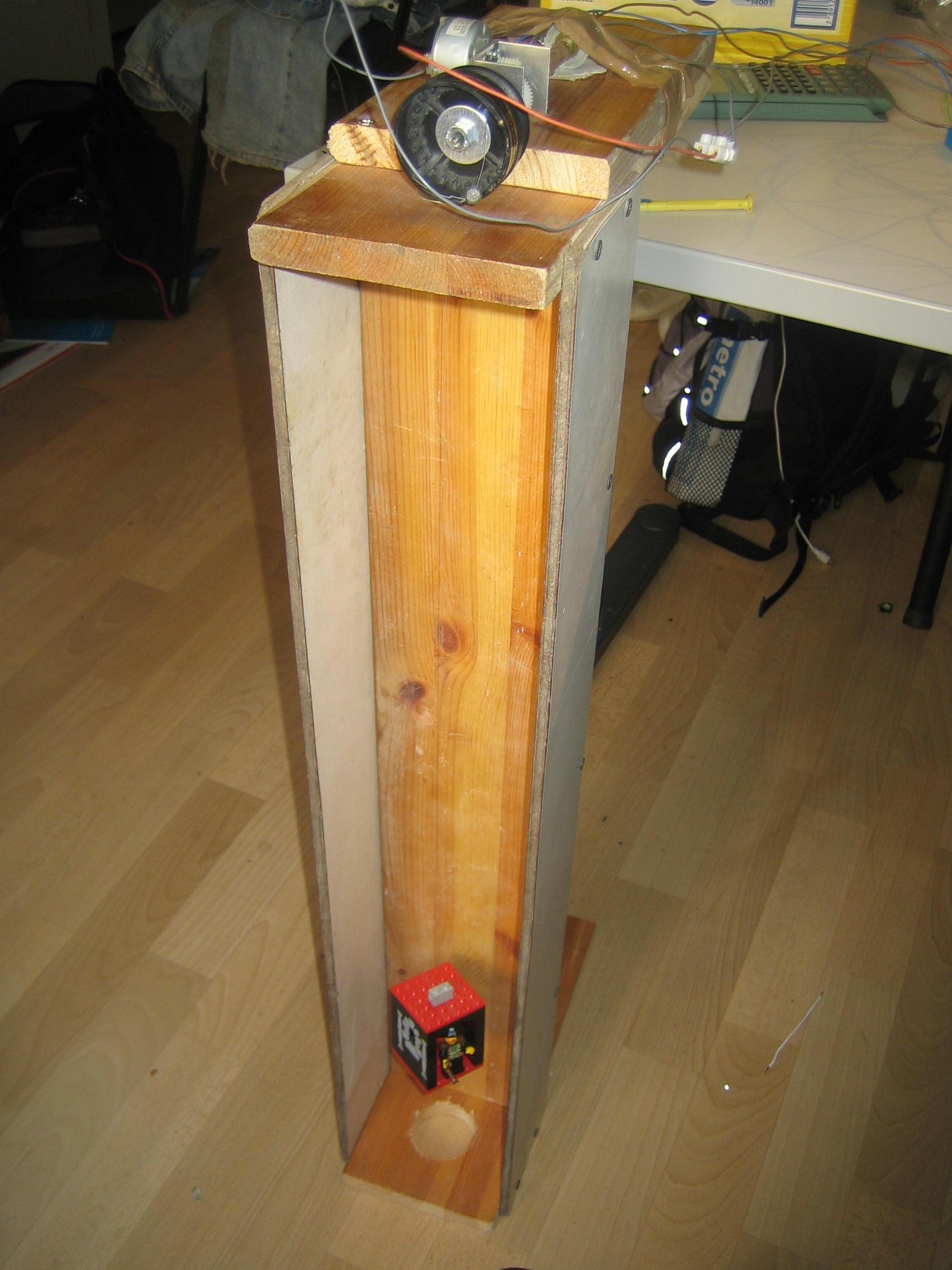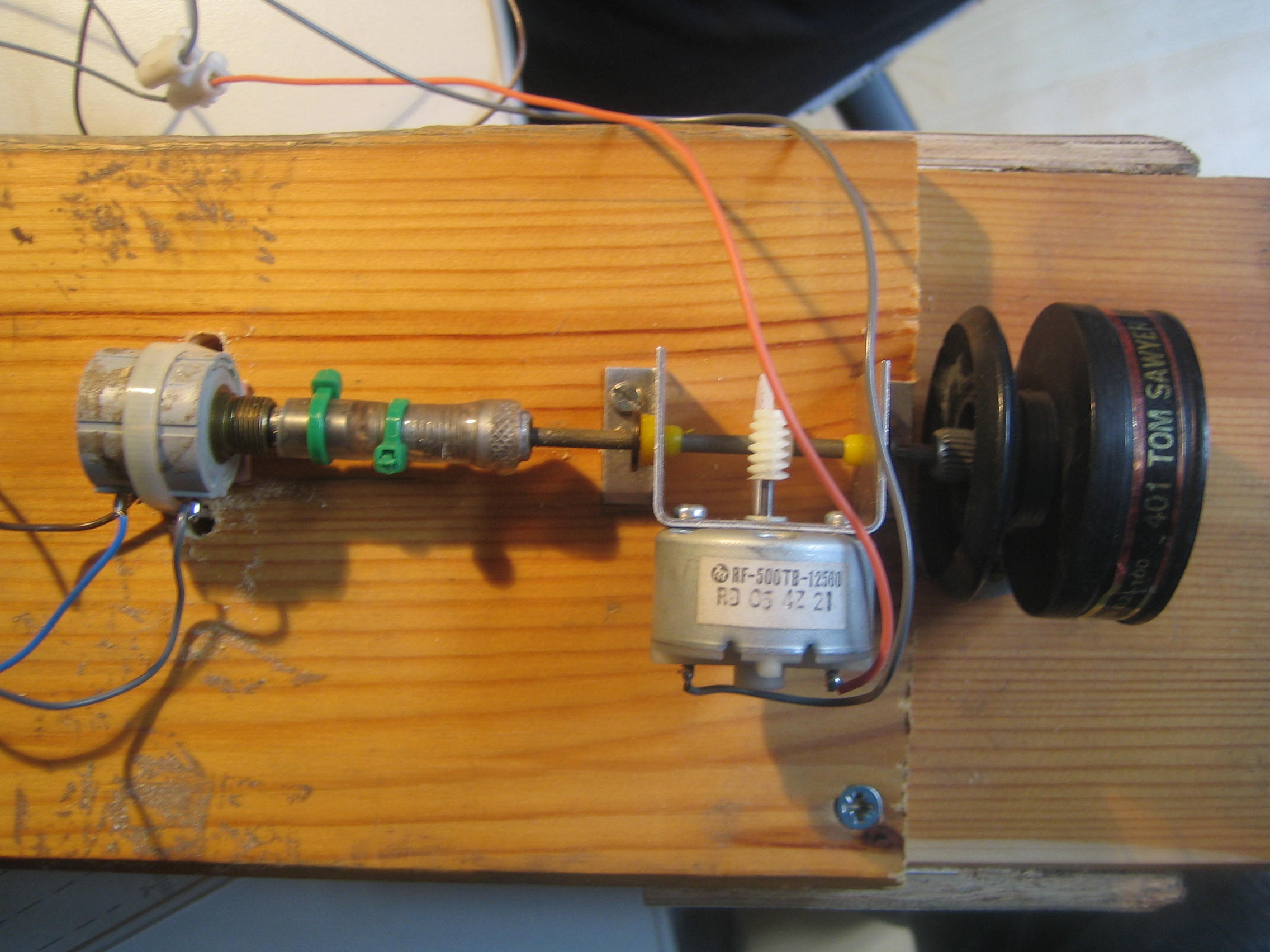The Elevator
A mechatronics project
Here you can find information about the construction of the shaft and the used mechanics
In order to have
something we could
play with in our project an elevator shaft, cage, a drive, a
localisation mechanism and a way to connect the elevator cage to the
drive were needed.
For the shaft a few different concepts had to be considered. The most important decision to be made was if we would use a counterweight or not. We concluded that it was not necessary because we were going to use a very light elevator cage. If we wanted to make that cage heavier the use of a counterweight becomes important.
A picture of the shaft is shown below.

For the drive the use of a DC-motor was necessary because of the changing speed. (This is most easily done using a DC-motor) Different types were tested and the RF-500TB prove to be the best choice since his high force-current ratio. Because the motor came with a worm-wheel reduction we had a good reduction of the speed so we had a drive that could slowly lift a small cage with no problems.
Then a localisation mechanism was chosen. Since we always want to know where our lift is we needed a mechanism that could do this. 2 options were availible, an encoder or a potentiometer. We chose to use the potentiometer for simplicity. No initialisation and difficult read-out program was necessary in contrary to the encoder. We chose to use a mulptiple turns 10k Ohm potentiometer. This was directly connected to the axis with the worm wheel.
The only challenge left was to connect the elevator cage to the axis. An old part of a fishing rod was connected to the axis. This fishing rod is connected to a wire holding the elevator cage.
The heigt of the shaft is chosen in such a way that the potentiometer makes 10 turns when going form the highest level to the lowest level of the elevator.
A picture of the drive, localisation mechanisme and the connection to the elevator cage is shown below.

For the shaft a few different concepts had to be considered. The most important decision to be made was if we would use a counterweight or not. We concluded that it was not necessary because we were going to use a very light elevator cage. If we wanted to make that cage heavier the use of a counterweight becomes important.
A picture of the shaft is shown below.

For the drive the use of a DC-motor was necessary because of the changing speed. (This is most easily done using a DC-motor) Different types were tested and the RF-500TB prove to be the best choice since his high force-current ratio. Because the motor came with a worm-wheel reduction we had a good reduction of the speed so we had a drive that could slowly lift a small cage with no problems.
Then a localisation mechanism was chosen. Since we always want to know where our lift is we needed a mechanism that could do this. 2 options were availible, an encoder or a potentiometer. We chose to use the potentiometer for simplicity. No initialisation and difficult read-out program was necessary in contrary to the encoder. We chose to use a mulptiple turns 10k Ohm potentiometer. This was directly connected to the axis with the worm wheel.
The only challenge left was to connect the elevator cage to the axis. An old part of a fishing rod was connected to the axis. This fishing rod is connected to a wire holding the elevator cage.
The heigt of the shaft is chosen in such a way that the potentiometer makes 10 turns when going form the highest level to the lowest level of the elevator.
A picture of the drive, localisation mechanisme and the connection to the elevator cage is shown below.

The connections form the
potentiometer and the fishing rod part to the axis are made in such a
way that they can be removed without damaging the axis.
Back
Back
Materials
- DC-motor
- Potentiometer
- Wood
- Fishing rod
